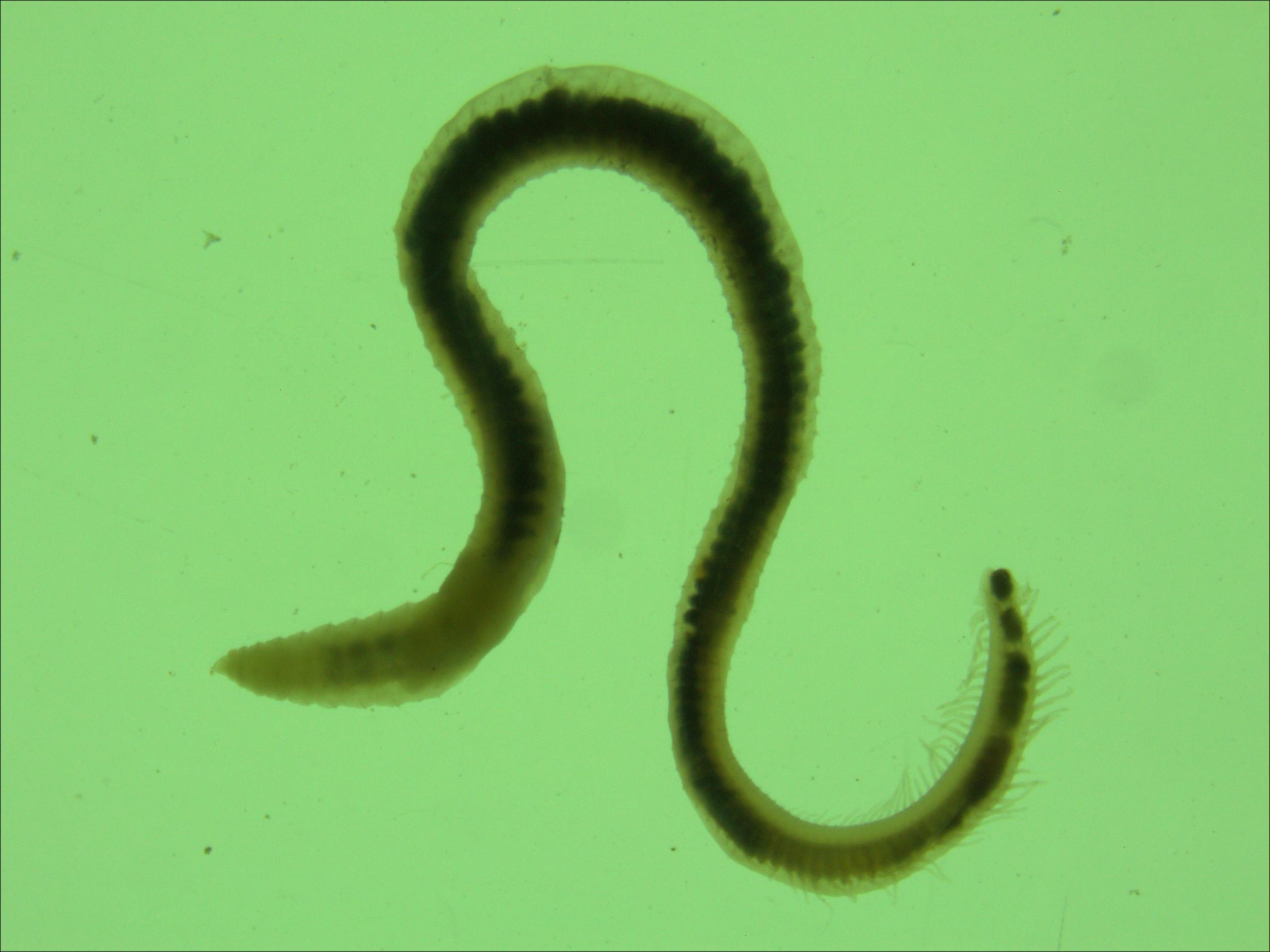
Branchiura sowerbyi
Annelids-Oligochaetes
The oligochaete Branchiura sowerbyi is a large freshwater oligochaete with conspicuous gills. Like other oligochaetes, it can expand and contract its body, but can reach 100-150 mm. It was first discovered in mud from tanks housing a giant South American water-lily in Regent's Park, London in 1892 and was subsequently found in botanical gardens in Hamburg, Germany, and other European cities. Many years later, in 1913 the worm was found living under natural conditions in a pond near Lahore, India. We now know that it is native to Southeast Asia and is one of the most common freshwater oligochaetes there. This little worm has traveled around the world showing up on all continents except Antarctica. Most of the movement has probably been with exotic water plants, but solid ballast and ballast water are potential means of introduction. The first collection of this species in North America was in Ohio in 1930. Now, it is common in many areas including Great Lakes, Chesapeake tributaries, and the San Francisco Bay Delta, as well as many inland river basins. Oligochaetes are head-down feeders, can transport buried organic material to the surface, and can increase the penetration of oxygen. Branchiura sowerbyi may have large impacts due to its size and frequent abundance. Adults can reach 185 mm, and are hermaphroditic, laying egg cocoons in the sediment. This worm is predominantly a freshwater species, but it has been collected at a salinity of 10 PSU in Chesapeake Bay,